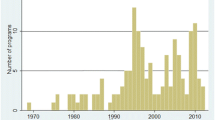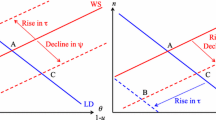Abstract
Outside of direct fiscal policy effects, the rise in inequality may be attributed to the demand for highly skilled labor rising more rapidly than its supply, as well as to reduced bargaining power by labor in the workplace. On fiscal policy, the US tax and benefit system is still progressive. The tradeoff between using tax hikes and higher benefits to reduce inequality vs. their negative effects on growth remains disputed. Very broad proposals such as Medicare for All and a Universal Basic Income are inefficient ways to address inequality, and the objectives of a wealth tax may be achieved through the existing income and estate tax systems. Broadening the tax base to move to more of a consumption-based system, and improving pre-K and K-12 education, are desirable policies.
Similar content being viewed by others
Author information
Authors and Affiliations
Corresponding author
Additional information
Publisher's Note
Springer Nature remains neutral with regard to jurisdictional claims in published maps and institutional affiliations.
Prepared from the transcript of the session Fiscal Policy Responses to Economic Inequality held at the NABE Economic Policy Conference, February 25, 2020. Diane Lim moderated.
Rights and permissions
About this article
Cite this article
Furman, J., Holtz-Eakin, D. Fiscal policy responses to economic inequality. Bus Econ 55, 113–119 (2020). https://doi.org/10.1057/s11369-020-00177-1
Published:
Issue Date:
DOI: https://doi.org/10.1057/s11369-020-00177-1




